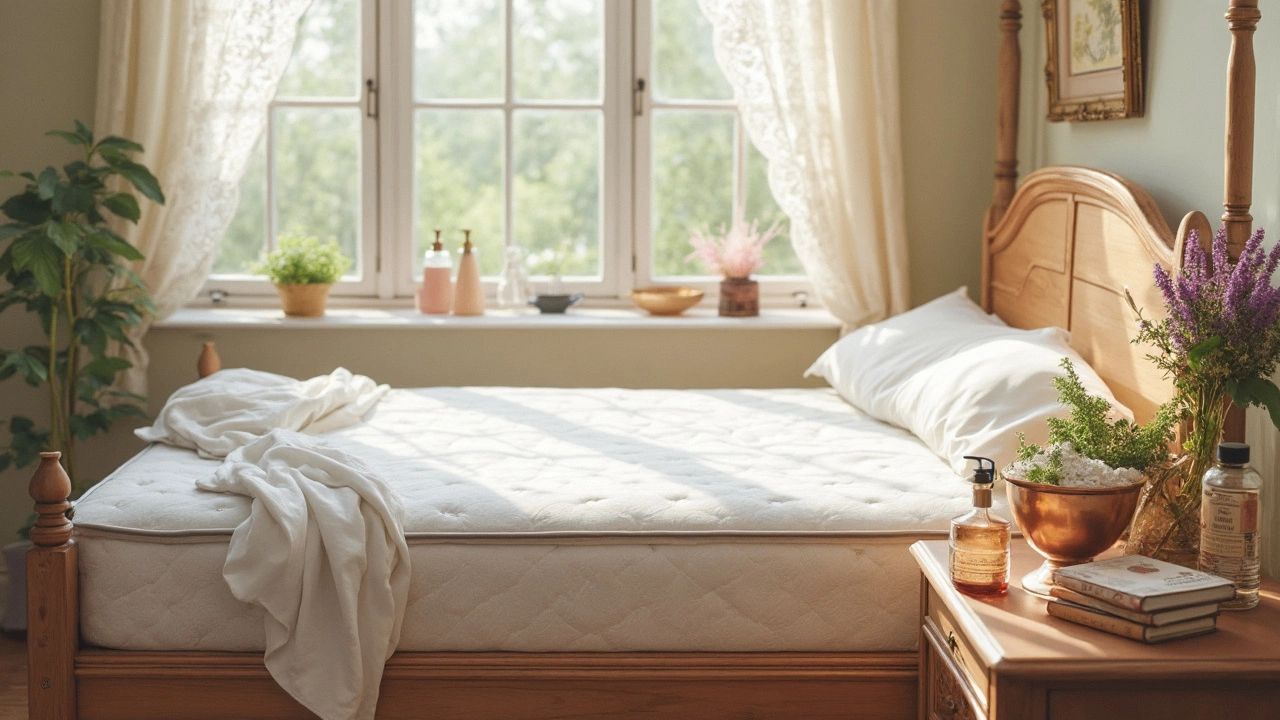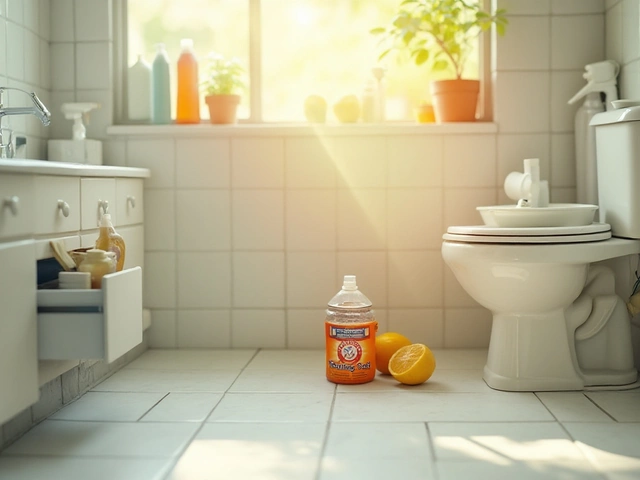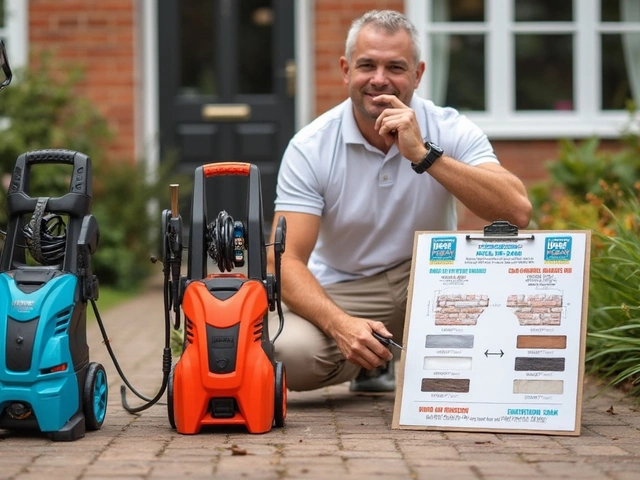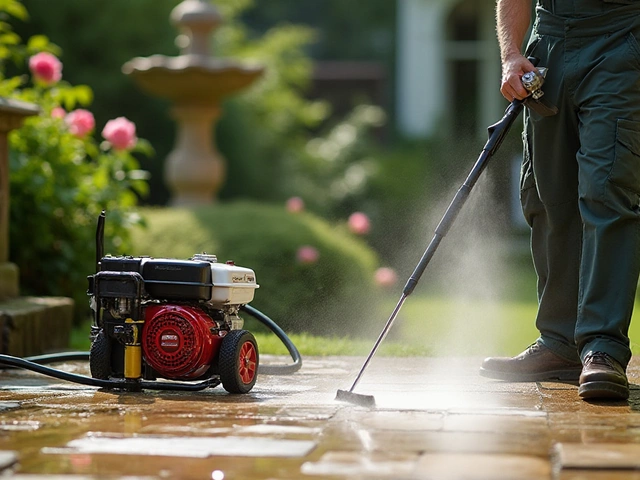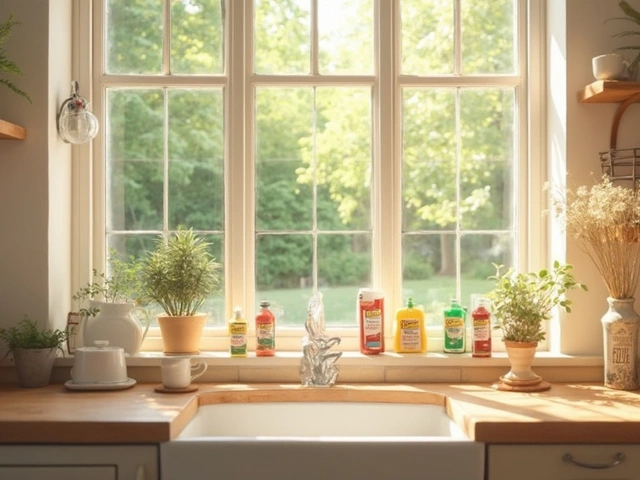Yellow Stain Removal: Your Quick‑Start Handbook
When dealing with yellow stain removal, the process of erasing yellow discoloration caused by grease, food residue, or mineral deposits. Also called yellow grime cleanup, it helps restore the look and efficiency of ovens, glass doors, and surrounding surfaces. Oven cleaning focuses on eliminating baked‑on grease and carbon buildup inside the cooking cavity often goes hand‑in‑hand with this task. Meanwhile, hard water stains are mineral‑rich marks that turn yellow or brown on glass and metal can make the problem look worse. Finally, eco‑friendly cleaning uses non‑toxic ingredients like baking soda, vinegar, or plant‑based surfactants gives you a safe way to finish the job.
Why do yellow stains appear in the first place? Most of the time it’s a mix of burnt‑on food, oily splatters, and mineral deposits from steam. When you bake or roast, tiny particles settle on the oven walls and, over time, oxidize into a yellow‑brown film. In kitchens with hard water, the steam carries calcium and magnesium that settle as limescale a hard, chalky residue that stubbornly clings to glass doors and metal racks. The presence of limescale often amplifies the yellow hue, making it look like a permanent stain. Understanding that yellow stain removal requires both degreasing and descaling lets you pick the right tools and avoid wasted effort.
Tools and Ingredients That Actually Work
Most DIY fans reach for baking soda and vinegar because the combo fizzes and feels powerful. The science backs it up: baking soda’s mild alkalinity loosens greasy bonds, while vinegar’s acetic acid dissolves mineral buildup. Pair them with a soft scrub pad and you have a low‑cost, natural all‑purpose cleaner a mixture safe for metal, enamel, and glass that avoids harsh chemicals. For tougher yellow patches, a splash of Dawn dish soap a grease‑cutting surfactant that works well on oily oven walls mixed with warm water can cut through carbonized grime. If you prefer a commercial route, look for products labeled “non‑acidic oven cleaner” – they target yellow stains without etching the enamel.
Application technique matters as much as the formula. Start by removing loose debris with a dry cloth. Then spray or spread your chosen cleaner, letting it sit for 10‑15 minutes. The pause allows the chemistry to break down the film. After the dwell time, use a non‑scratch scrubber to rub in a circular motion; this helps lift the stain without scratching the finish. Finally, wipe clean with a damp microfiber towel and polish the surface with a dry one to prevent streaks. Repeating the process on stubborn spots may be necessary, but you’ll see the yellow fading after just one round.
What about the oven glass door? Yellowing there often combines grease with hard‑water mineral rings. A two‑step approach works best: first, tackle the grease with a mild abrasive like baking soda paste. Second, attack the mineral rings with a vinegar‑water rinse or a citric‑acid solution (think lemon juice). The citric acid reacts with calcium carbonate, turning it into soluble salts that rinse away. If the glass is particularly thick, a steam‑clean cycle on a low setting can help loosen both grease and mineral layers, making the manual wipe easier.
Maintenance is the cheapest cure. After each cooking session, a quick wipe‑down with a damp cloth prevents buildup. A monthly deep clean using the methods above keeps yellow stains from cementing into the enamel. For households with hard water, consider a water‑softening filter on the kitchen tap; softer water means fewer mineral deposits, which directly reduces the frequency of yellow stain removal sessions.
The above strategies cover the main culprits behind yellow discoloration, but keep an eye on other variables. Over‑heating the oven can carbonize any residue faster, while cooking acidic foods (like tomato sauces) can leave a faint yellow tint on metal surfaces. Adjusting cooking temperatures and using splatter guards can cut down on the problem at the source. In short, yellow stain removal encompasses proper cleaning techniques, the right chemicals, and preventive habits—all of which you’ll find expanded on in the posts below.
Below you’ll discover detailed guides on homemade cleaners, hard‑water stain elimination, limescale differentiation, and eco‑friendly product reviews. Whether you’re battling a year‑old bake‑on mess or just want to keep your oven sparkling between uses, the collection offers step‑by‑step instructions, safety tips, and product comparisons to help you choose the best path forward.
